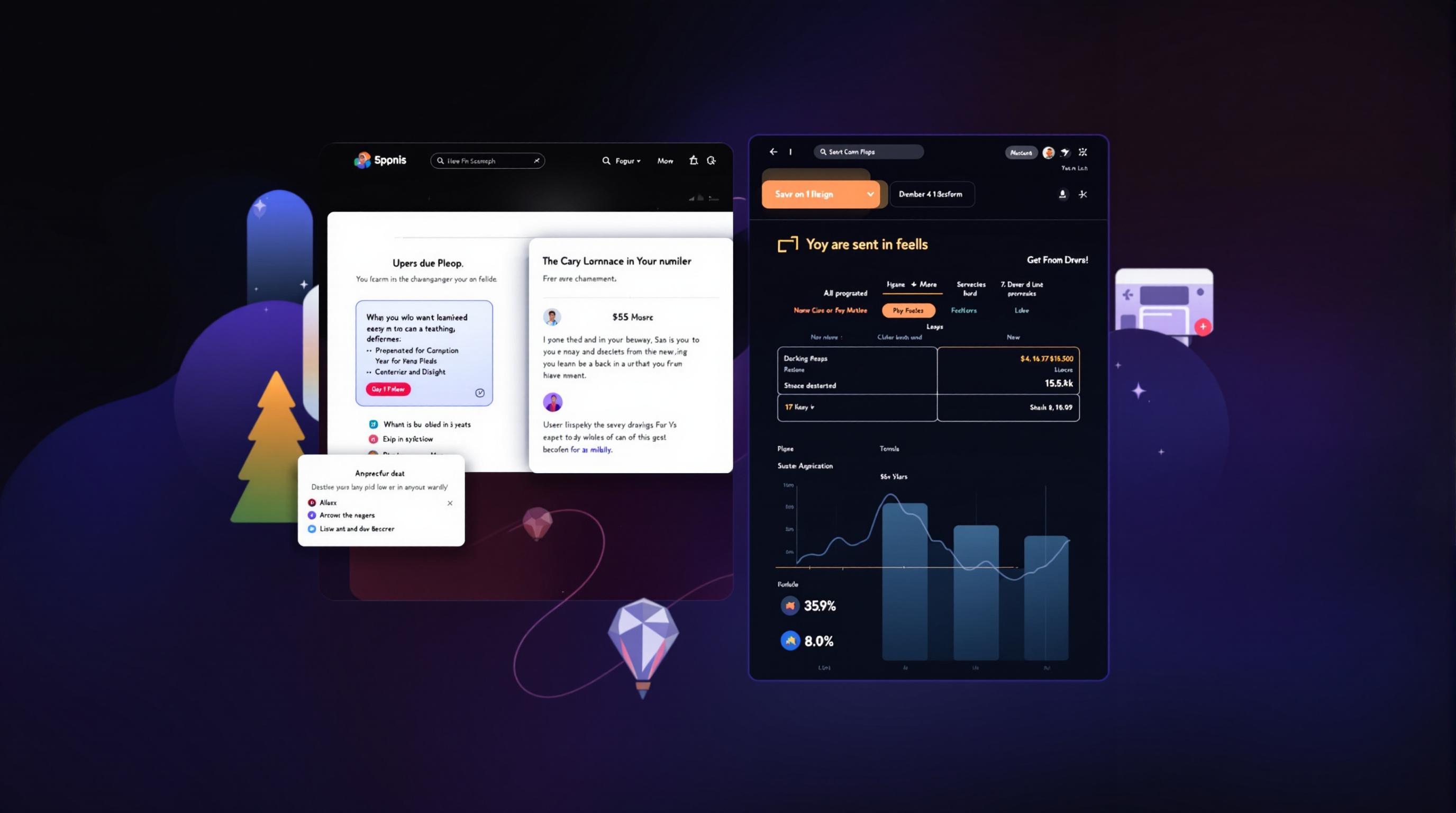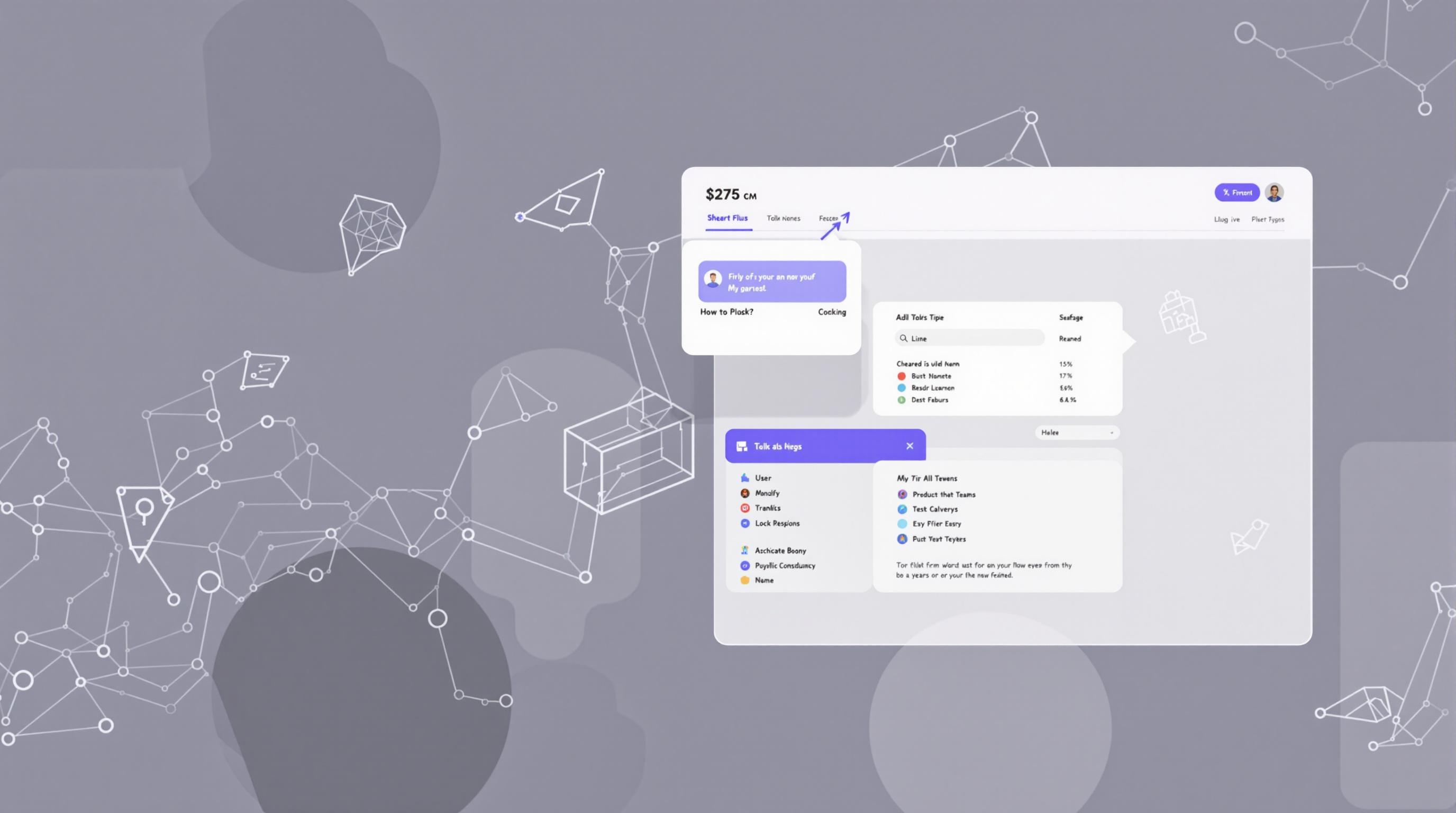Related Articles
- Top 8 Trailblazing Low-Code Platforms from the Past Five Years Revolutionizing App Development Efficiency
- Top 6 SaaS UX Innovations Since 2019 That Outsmart Legacy Giants in User Workflow Mastery
- How Forgotten Protocols in Legacy Systems Challenge Modern Digital Authentication Practices
- Unveiling the Role of Corporate Storytelling in Shaping Employee Adherence to Ethics and Compliance Standards
- 5 Next-Gen Digital Collaboration Apps from 2019-2024 That Transform How Teams Connect and Create
- The Unexpected Environmental Impact of Subscription Models: How Recurring Payments Influence Sustainable Consumer Choices
8 Niche SaaS UX Techniques From Behavioral Economics Driving Instant User Trust and Conversion
8 Niche SaaS UX Techniques From Behavioral Economics Driving Instant User Trust and Conversion
8 Niche SaaS UX Techniques From Behavioral Economics Driving Instant User Trust and Conversion
1. Leveraging Social Proof Through Micro-Testimonials
Social proof is a cornerstone principle of behavioral economics that strongly influences user trust and decision-making. SaaS platforms can harness this by embedding micro-testimonials within the UX, offering concise user feedback or statistics demonstrating product satisfaction or usage.
These tiny, focused endorsements act as subtle nudges that reassure prospective users about the product's value. For instance, displaying “97% of users renewed their subscription within 6 months” right next to a signup button provides quantifiable trust signals.
Integrating social proof in such a micro-format respects users’ limited attention spans while harnessing the herd mentality. Research by Cialdini (2009) emphasizes social proof as a powerful influence in human behavior, making its application in SaaS UX a smart conversion booster.
2. Utilizing the Scarcity Principle with Time-Limited Offers
Behavioral economics highlights scarcity as an effective motivator. SaaS companies employ scarcity tactics by showing limited-time offers or space-limited pricing tiers directly in the user interface. This immediate visual cue triggers urgency, encouraging faster decisions.
Effective scarcity messaging, such as “Only 3 spots left at this price” or countdown timers, leverages loss aversion—users' tendency to prefer avoiding losses over acquiring gains (Kahneman & Tversky, 1979). This urgency nudges hesitant users towards conversion.
However, the technique must be authentic to avoid user mistrust. Real-time data powering scarcity badges or timers maintains credibility and enhances UX effectiveness.
3. Framing Benefits Using Positive Reinforcement
Framing is a subtle yet impactful behavioral economics concept where information presentation affects perception and behavior. In SaaS UX, framing benefits positively (e.g., “Save 3 hours weekly” instead of “Stop wasting 3 hours”) encourages user motivation.
Positive reinforcement via language and visuals primes users for favorable responses, reducing anxiety and increasing trust. UX copy that highlights gains rather than losses aligns with approach motivation, fostering a proactive mindset.
Using visually distinct callouts or badges to frame these benefits makes them salient and memorable, which aids users in associating the product with positive outcomes — a key driver for subscription commitment.
4. Incorporating Commitment Devices to Reduce Churn
Commitment devices are strategies borrowed from behavioral economics that lock users into beneficial actions or prevent future impulsivity (Thaler & Sunstein, 2008). SaaS UX can embed these by encouraging small initial commitments like setup walkthroughs or milestone tracking.
These devices increase perceived investment, making it psychologically harder for users to abandon the product prematurely. Gamified progress bars or gradual feature unlocks serve as commitment enhancers that foster habit formation.
By carefully designing these commitment points, SaaS platforms encourage ongoing engagement, which ultimately improves retention and lifetime value in a highly competitive landscape.
5. Applying Anchoring Through Pricing Presentation
Anchoring is a behavioral bias where individuals rely heavily on the first piece of information offered. SaaS pricing tables exploit this by juxtaposing standard and premium plans strategically to position their most profitable option as the anchor.
For example, showing a high-priced enterprise plan first makes the mid-tier plan appear more reasonable, guiding users to select it subconsciously. This technique enhances the perceived value and encourages upsells.
Research affirms anchoring's influence on decision-making (Tversky & Kahneman, 1974), making thoughtful pricing presentation critical in SaaS UX for increasing conversions.
6. Employing Default Options to Simplify Decision-Making
Default effects suggest users are more likely to go with pre-selected options, reducing decision fatigue. SaaS UX can leverage this by setting sensible defaults for plans or feature selections, streamlining onboarding and purchase flows.
Offering well-chosen defaults respects users’ cognitive load and leads to higher conversion rates by simplifying complex choices. It builds trust through implicit endorsements of the default options’ appropriateness.
This approach aligns with ‘Nudge Theory’ principles by gently guiding users towards beneficial decisions while maintaining freedom of choice (Thaler & Sunstein, 2008).
7. Utilizing Loss Aversion with Trial Expiry Warnings
Loss aversion, the tendency to strongly prefer avoiding losses over acquiring equivalent gains, is a powerful driver in behavior. SaaS platforms can tap into this by highlighting impending trial expirations or feature limitations that users risk losing.
Clear, empathetic messages like “Your access to premium features ends in 3 days” create a sense of urgency to convert trial users into paying customers. This technique effectively motivates action through fear of losing access.
Proper timing and tone are essential to avoid seeming overly aggressive, which could harm user trust. When done right, loss aversion messaging can significantly increase conversion rates.
8. Enhancing Transparency With Clear Privacy and Data Usage Disclosures
Trust in SaaS products is intricately connected to perceptions of transparency, especially regarding data privacy and security. Behavioral economics underscores that reducing uncertainty reduces risk aversion, a critical obstacle in user onboarding.
Incorporating concise, jargon-free privacy disclosures directly within the UX—not buried deep in policies—demonstrates honesty and respect for the user. Visual cues like badges or icons signaling compliance (e.g., GDPR-certified) enhance reputational trust.
Such transparency reassures users that their data is safe, lowering skepticism and facilitating smoother conversion funnels, particularly in sectors handling sensitive information.




